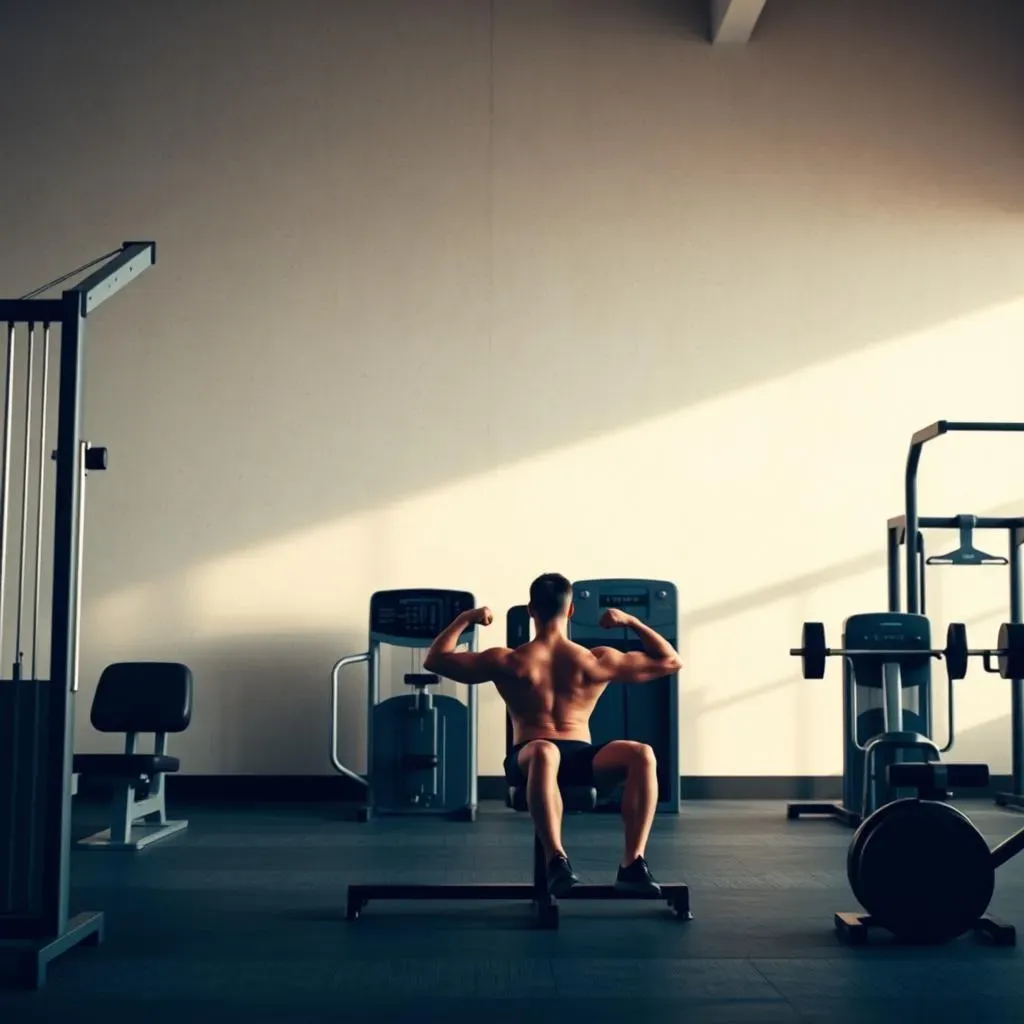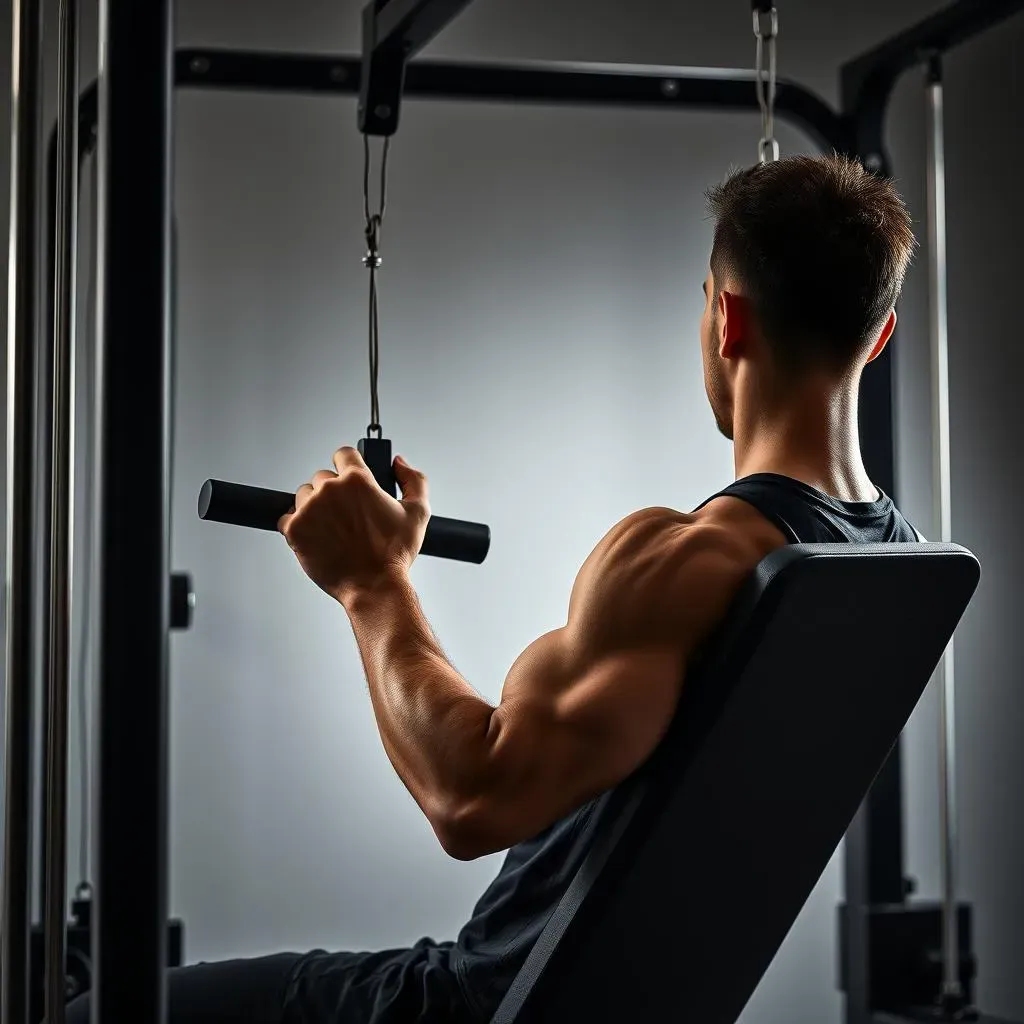Table of Contents
So, you've got a home gym, that's great! But, staring at all that equipment can feel a bit like facing a puzzle, right? You're not alone. Figuring out how to use home gym equipment can be tricky. It's not as simple as just hopping on and hoping for the best. This guide is your friendly cheat sheet, breaking down the basics so you can actually use that stuff without hurting yourself or looking like a confused newbie. We'll cover essential machines, like the lat pull-down and leg press, explaining what they do and how to use them properly. We'll also get into important safety tips, because, let's be real, nobody wants a gym injury. By the end of this, you'll be confidently using your home gym, making the most of your workout, and maybe even showing off your new skills to your friends. So, let's get started and turn your home gym into your personal fitness playground. We're going to cover everything from how to use home gym equipment safely to maximizing your workouts.
Essential Home Gym Equipment: A User's Guide
Essential Home Gym Equipment: A User's Guide
so you're ready to dive into the world of home gyms, awesome! Let's talk about the gear you're likely to find and what it actually does. First off, you've probably seen a lat pull-down machine. This bad boy isn't just for show; it targets those back muscles, the latissimus dorsi, which are super important for posture and protecting your spine. Think of it like giving your back a big, strong hug. Then there's the seated row machine, which is like the lat pull-down's best friend, but it focuses more on your mid-back. It's great for building overall back strength. And hey, who doesn't want a strong back? It's like the foundation for everything else. These two machines together are like a dynamic duo for your upper body.
Now, let's move on to the classics. The bench press, whether you're using a barbell or a machine, is a staple for building chest and shoulder muscles. It's a compound exercise, meaning it works several muscles at once, which is super efficient. Then we have the leg press machine, which is like a superhero for your legs, allowing you to lift heavy weights without putting too much stress on your spine. It's perfect for building those powerful quads and glutes. And if you're dreaming of doing pull-ups, but can't quite get there yet, the assisted pull-up machine is your new best friend. It helps you build the strength to eventually do them on your own.
Equipment | Main Muscle Group | Benefits |
|---|---|---|
Lat Pull-down Machine | Latissimus Dorsi (Back) | Improves posture, protects spine |
Seated Row Machine | Mid-Back | Builds back strength, improves posture |
Bench Press | Pectorals, Anterior Deltoids | Builds chest and shoulder muscles |
Leg Press Machine | Quadriceps, Glutes | Allows heavy lifting without spine strain |
Assisted Pull-up Machine | Back, Biceps | Helps build strength for unassisted pull-ups |
How to Use Home Gym Equipment Correctly
How to Use Home Gym Equipment Correctly
Adjusting the Equipment
so you’ve got your machine picked out, but before you start pumping iron, let's talk about setup. It's not a one-size-fits-all situation. You need to adjust the equipment to fit your body. For example, on the lat pull-down, make sure the seat height allows your knees to be comfortably under the pads. Your arms should be able to reach the bar without straining. On the leg press, adjust the seat so your knees are at about a 90-degree angle when you’re at the bottom of the movement. It might seem like a pain, but these little tweaks make a huge difference in your workout and more importantly, help prevent injuries. Think of it like tailoring a suit – it has to fit *you* just right.
Another thing, don't be afraid to play around with the settings. Most machines have adjustable seats, pads, and handles. A good way to test if its right for you, is to start with no weight or very little weight, and see if you can complete the movement with full range of motion, without any discomfort. If you feel like you're reaching too far or are cramped, take a moment to adjust. It's way better to spend a few extra minutes getting everything set up correctly than to deal with an injury later. Trust me, your body will thank you. Getting this part right is half the battle.
Proper Form and Technique
Now that you're all set up, let's talk about how to actually use the equipment. It's not about how much weight you can lift, it's about how well you move that weight. Proper form is your best friend when using any machine. For a lat pull-down, pull the bar down to your chest, keeping your back straight, and focus on squeezing your shoulder blades together. Avoid using momentum and don’t let the bar snap back up. For the seated row, pull the handles towards your stomach, focusing on squeezing your back muscles. Your back should remain straight. And for the bench press, lower the weight slowly, keeping your elbows slightly tucked in, and push back up. No need to speed through the movement, slow and controlled is the name of the game.
And remember, start light. It's tempting to load up the plates and go for broke, but that's a recipe for disaster. Start with a weight that you can comfortably lift for 10-12 repetitions with good form. As you get stronger, you can slowly increase the weight. But always prioritize form over weight. It's like learning to play an instrument, you wouldn't start with a complex piece, you'd start with the basics, and build up from there. The same goes for working out, master the basics and you will see better results, and be safe while doing it.
Key Points for Correct Form | Description |
|---|---|
Controlled Movements | Avoid jerky motions. Focus on smooth and steady movements. |
Full Range of Motion | Move through the full range of motion for each exercise. |
Engage Target Muscles | Focus on feeling the muscle you're trying to work. |
Maintain Proper Posture | Keep your back straight, and core engaged. |
Start Light | Begin with a weight you can comfortably lift with good form. |
Tips For Safe and Effective Home Gym Use
Tips For Safe and Effective Home Gym Use
Creating a Workout Plan
so you've got the gear and you know how to use it, now let's talk about putting it all together. It's tempting to just jump from machine to machine, but having a plan is way more effective. Think of it like a roadmap for your fitness goals. A solid plan should include a mix of exercises that work different muscle groups. This means you're not just focusing on your biceps and chest, but also hitting your back, legs, and core. A full-body training program is your best bet for overall fitness and avoiding muscle imbalances. It doesn't have to be super complicated, just a simple routine that hits all the major muscle groups a few times a week is a great start. And remember, consistency is key. It's better to workout 3 times a week consistently, than just randomly going to the gym once in a while.
Now, don’t be afraid to adjust your plan as you go. Maybe you find out that you really enjoy using the cable machine, or maybe you discover that leg presses are your nemesis. It’s okay to tweak things to fit your preferences and progress. The most important thing is that you have a plan, and you stick to it as much as possible. It's like cooking, you might start with a recipe, but you add your own twist to make it your own. The same goes for your workout plan; make it work for you.
Gym Etiquette and Safety
So, you're in your home gym, which means you're probably the only person using the equipment, right? Well, even if it's just you, it's good to have some gym etiquette. First and foremost, always leave the equipment as you found it. This means putting the weights back where they belong, adjusting the seats to their original positions, and wiping down anything that might have gotten sweaty. It's like keeping your room tidy, it makes it easier to use next time and it shows respect for the equipment and yourself. And hey, if you are doing this in a shared space, it's just basic politeness.
And finally, safety first. Always make sure that all equipment is in good working order before you start your workout. Check for loose bolts, frayed cables, or any other issues. If something seems off, don’t use it until it’s been fixed. It's like checking your car before a long drive, you want to make sure everything is running smoothly. And if you're lifting heavy weights, make sure you have a spotter, or at least someone nearby who can help you if you get into trouble. If you're working out by yourself, be extra careful, and don't lift more than you can handle. It's not worth getting injured just to lift a little more weight. Remember, the goal is to get stronger, not to get hurt. Listen to your body, and don't push yourself too hard.
Tip | Description |
|---|---|
Full-Body Training | Include exercises that work all major muscle groups. |
Consistent Routine | Workout regularly to see the best results. |
Equipment Check | Ensure equipment is in good working order before use. |
Respect Equipment | Return weights and adjust settings after use. |
Safety First | Always prioritize safety and don’t lift more than you can handle. |
Wrapping Up Your Home Gym Journey
Alright, you've made it through the guide! You now know how to use home gym equipment safely and effectively. Remember, it's all about starting slow, focusing on form, and listening to your body. Don't feel pressured to lift heavy right away; it's a marathon, not a sprint. Keep practicing, stay consistent, and you'll see real progress. Your home gym is now your personal fitness playground. Go have fun and get those gains! And hey, if you ever feel lost again, just revisit this guide. You've got this!